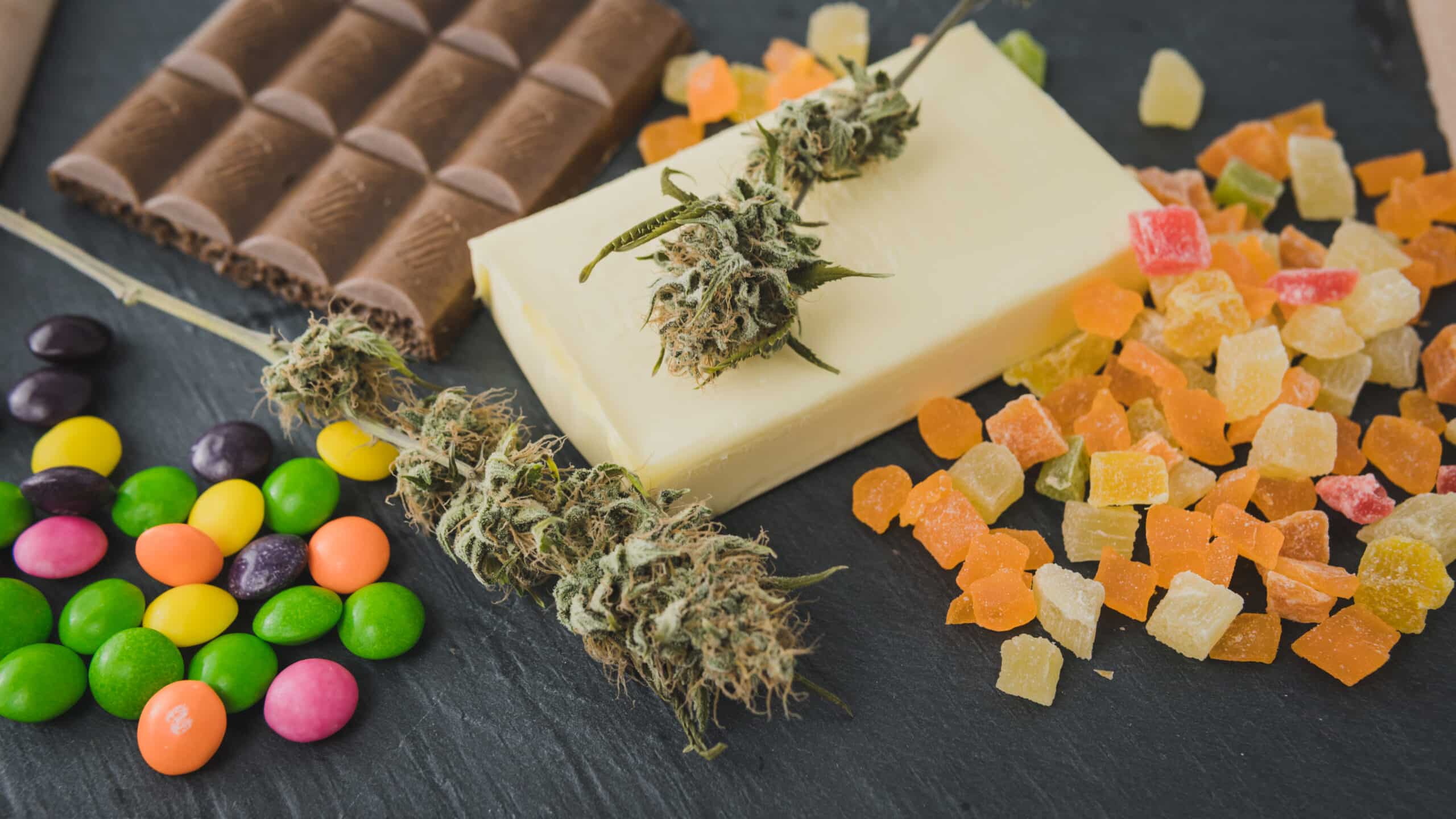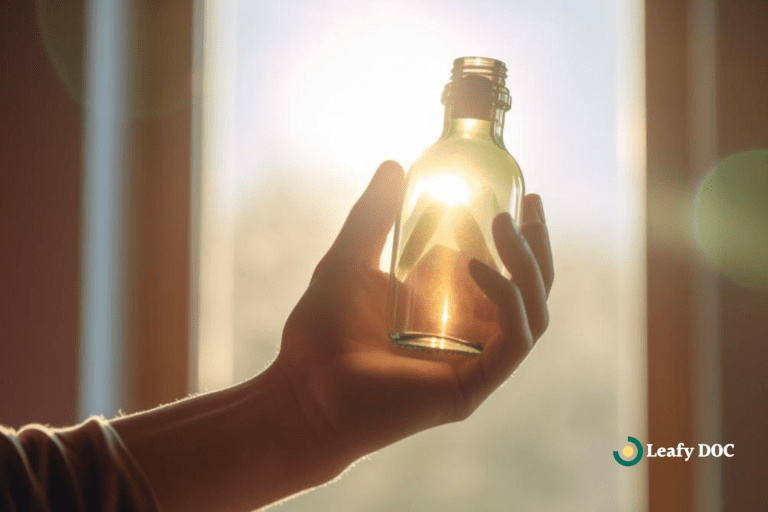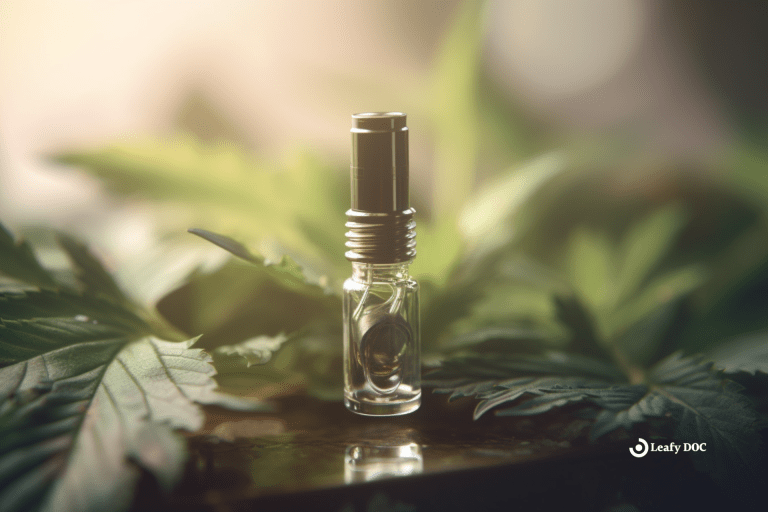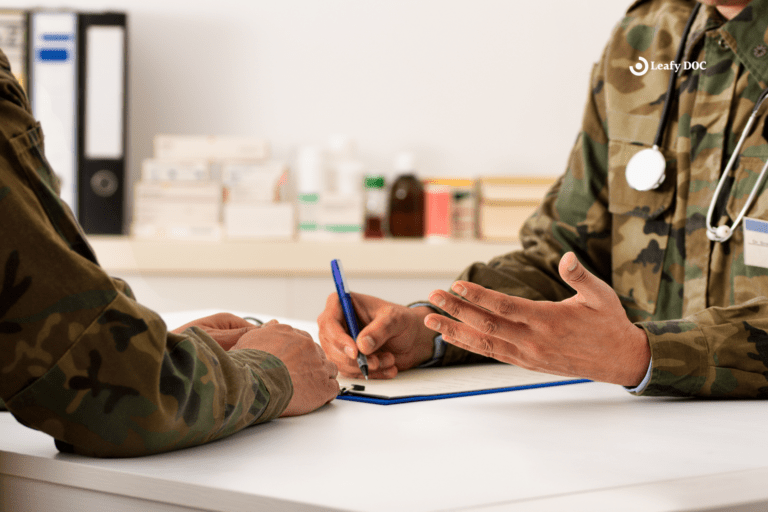What Are Edibles
by Haley Mills · November 30, 2022
If you’re looking for information on what edibles are, then this is the page for you.

Edibles are an essential option for those who aren’t interested in smoking cannabis but still want to try the therapeutic benefits of medicinal weed. Read on for information about dosing and consuming cannabis edibles.
The Basics of Edibles
Edible cannabis products contain cannabinoids that you can consume by eating or drinking. Cannabinoids are chemical compounds found in cannabis that can affect your mind and body after consumption. THC (tetrahydrocannabinol) and CBD (cannabidiol) are two common cannabinoids that offer different effects from an edible dose, however, there are many others including the newly popular CBG and CBN cannabinoids. THC typically makes an individual feel high and provides many cerebral benefits, while CBD targets the body to relieve pain and promote healthy sleep.
Edibles & Your Body’s ECS
Edibles are consumed and digested through infusing food or drinks, (think chocolate bars, gummies, and teas) and encouraging the body’s endocannabinoid system (ECS) to perform its natural duties. The endocannabinoid system comprises an extensive network of chemical signals and cellular receptors densely packed throughout our brains and bodies and helps us achieve and maintain homeostasis.
The “cannabinoid” receptors in the brain — the CB1 receptors — outnumber many other receptor types in the brain. They regulate the body through immediate feedback, turning up or down the movement of whichever system needs to be adjusted, whether hunger, temperature, or alertness. Our bodies produce endocannabinoids to stimulate these receptors, which are similar to molecules in the cannabis plant.
The endocannabinoid system regulates learning and memory, emotional processing, sleep, temperature control, pain control, inflammatory and immune responses, and eating. This vital system is currently at the center of renewed international research and drug development.
Here are a few ways a cannabis edible has been used throughout human history:
- Cannabis use in edibles dates back to the Middle Age, over 50,000 years ago. Marijuana is considered one of the first plants humans explored for consumption and medicinal purposes. Ancient India held the “origin of edibles” through a hash-filled confection called mahjoun.
- In Medieval times, Uzbekistan created guc-kand with THC for pain relief and sexual performance. Indonesia used marijuana in a toffee candy called dodol Aceh, while Cambodia infused Khmer foods with cannabis. Greece had khylos, a cannabis-infused wine steeped for several days.
- The Polish would combine cannabis seeds with salt, olive or coconut oil, and cannabutter and place it on a piece of crusty bread for a homemade edible cannabis product. Since then, as medical marijuana and recreational legalization grow in popularity, cannabis has been used to make edibles more than ever before.
- Human civilizations have made homemade cannabis edibles for centuries, beginning with the invention of bhang. Bhang is prepared from the buds of a cannabis plant and then typically consumed as a beverage in parts of South Asia. It combines milk, spices, and ghee crafted to infuse food and cannabis beverages for medicinal benefits.
Medical Marijuana for Your Health Conditions
Medical marijuana is commonly found to possess significant anti-inflammatory and antioxidant properties, which can help with chronic pain management reasonably quickly. Cannabinoid receptors (CBD and THC) bind to the brain and peripheral nerve cells and help regulate how you see and feel the pain to reduce symptoms.
Certain marijuana strains have been known to reduce anxiety and depression, promote creativity and motivation and increase appetite while reducing nausea.
A few therapeutic benefits include:
- Medicinal marijuana is commonly used as a pain reliever and an alternative to dangerous prescription medications like opioids.
- Marijuana has been used in various medical conditions, including PTSD, depression, arthritis, inflammation, auto-immune disorders, glaucoma, HIV/AIDS, chronic pain, and muscle spasms.
- Medical cannabis can effectively treats cancer symptoms caused by chemotherapy and radiation therapy.
Possible Risks to Weed Edibles
Edibles and smoking weed carries similar risks as other THC cannabis oil. The potential dangers of medical marijuana include:
- Nausea and vomiting
- Paranoia
- Anxiety
- Increased heart rate
- Dry or Red eyes
- Slowed cognitive function
- Extreme fatigue
Are marijuana edibles legal?
Cannabis-infused edibles are legal in certain states within the United States as long as they are produced by licensed cultivators and manufacturers of cannabis or industrial hemp. We suggest checking your local laws to know what is allowed in your state regarding THC and hemp. All states allow low-THC CBD products, however, here’s a list of states that allow higher-THC edibles:
- Alaska
- Arizona
- California
- Colorado
- Connecticut
- Illinois
- Maine
- Maryland
- Massachusetts
- Michigan
- Missouri
- Montana
- Nevada
- New Jersey
- New Mexico
- New York
- Oregon
- Rhode Island
- Vermont
How Long Does it Take for Edibles to Kick in?
It usually takes thirty to ninety minutes to feel the full effects of weed-edible foods depending on how much THC or CBD is in the dose. Reaction times can typically last two to four hours; however, this depends on dosage, tolerance level, body weight, and metabolism so it’s best to start with a low dose to see how the edibles will affect you specifically.
What is Cannabis Butter?
Cannabis butter is unsalted butter infused with cannabis and is an essential ingredient in many delicious weed edibles including sweet and savory snacks. It’s just one of the numerous ways to consume marijuana, but definitely among the most popular.
Weed brownies and many other homemade edibles typically use a cannabutter replacement for unsalted butter. This is a tasty way to receive the high that comes with adding THC to your food. Especially for those that don’t enjoy smoking marijuana, cannabis butter is just as effective for enjoying the benefits of cannabis without the smoke.
When utilizing cannabutter, there are endless possibilities for substitution. Really, with any recipe that calls for butter, cooking oil, olive oil, coconut oil, etc., cannabis-infused butter can be used as a replacement.
The Food Innovation Group, including top brands such as Bon Appetit and Epicurious, has featured many cannabis dishes, chefs, and restaurants in the past few years. The cannabis food industry will become more relevant as legal access grows.
what are the popular types of edibles?
- gummies
- brownies
- supplements
- tea
- savory snacks
- hard candy
Can I make my own edibles?
Absolutely! With weed edibles, the possibilities are virtually endless when it comes to making your own. From cannabis butter and oil to infused brownies, tea, soup, and more, there are so many ways to add cannabis to your favorite snacks. A quick Google search will lead you to hundreds, if not thousands, of recipe options.
How Long do My edibles last?
It’s best to use your cannabis edibles as quickly as possible within reason. The shelf-life of most edibles will be up to six months, depending on the quality. You will lose other cannabinoids, and the relative potency will decrease with time. However, frozen cannabis-infused butter and edibles can last much longer.
It’s a good idea to store the cannabutter in a sealed container inside the refrigerator. Filling mason jars is useful to ensure your edibles taste right. Edibles can also be stored in opaque glasses and opaque containers. In addition to decarbed cannabis, light exposure can decrease the lasting effects of your weed edibles. Always smell and taste older cannabis butter and Indica edibles before using them.
What is the best way to dose edibles?
For THC edibles, start with a low dose (1 ml ), then up your dosage as you feel comfortable doing so. For best results, increase your dosage of cannabis oil or edibles slowly over a few weeks to reduce discomfort and ensure you safely consume cannabis.
Proper dosage of cannabis butter can be tricky as many variables are involved. The best idea for beginner use is always to consume less than you believe you’ll need. For your first batch, start low and increase in increments, depending on your desired effects. Don’t consume more butter immediately without knowing its relative power and tolerance. No matter what, wait a couple of days to increase the dosage after your first experience.
The quantity of cannabis you should use to make edibles will always differ depending on the strain, recipe, and technique you use. What you want to know is THCA percent. The THCA is measurable on most legal marijuana jars, so you shouldn’t have trouble locating this information on legit and legal products. Remember, many variables determine the amount of THC you consume through cannabis-infused edibles.
The Takeaway
When cannabis edibles started out, users weren’t necessarily keen on the potency of the recipe or the buds in the older times. Cannabis education and tools just weren’t out there yet, but they are now. Today’s cannabis consumers can make themselves more familiar with personal usage and dosage thanks to the introduction of regulated edible products and the internet’s vast world of knowledge.
Last Updated: August 8, 2024
Get Approved for Your Medical Marijuana Card in Minutes!

Get Your Medical Card
Connect with a licensed physician online in minutes

Like This Article?
Share with your friends
Table of Contents
Keep Reading
-
The Benefits Of Cannabis Capsules For Medical Use
Uncover the numerous benefits of cannabis capsules for medical use in this informative article. Learn how these convenient capsules can enhance your health and well-being today!
-
How to Refill a Cannabis Vape Cartridge
Discover the expert technique for refilling your cannabis vape cartridge like a pro. Never waste oil again and experience delicious, smooth hits. Click now to learn how to refill a cartridge and enhance your vaping experience today!
-
The Push for Veterans’ Access to Medical Cannabis: Exploring the Veterans Equal Access Act
Discover the importance of the Veterans Equal Access Act and its impact on veterans’ access to medical cannabis. Join us as we explore the push for this crucial legislation and how it can improve the lives of those who have served our country.



